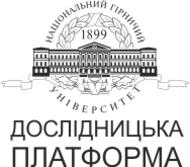№78-8
Numerical spatial groundwarer flow model of the Novotroitske flux limestone deposit
V. Tymoshchuk1, А. Zahrytsenko1, Y. Sherstiuk1, І. Chushkina1
1Dnipro University of Technology, Dnipro, Ukraine
Coll.res.pap.nat.min.univ. 2024, 78:90–100
Full text (PDF)
https://doi.org/10.33271/crpnmu/78.090
ABSTRACT
The purpose of study is to analyze the current hydrodynamic mode of the Novotroitske deposit territory and to develop and verify the spatial groundwater flow model of the deposit.
The methods. A spatial model of the deposit was created using Modflow software, initial data arrays created based on the analysis of geological, hydrogeological and mining-technical characteristics of the deposit area. The adequacy of approximation the hydrodynamic conditions of the studied territory by the numerical model was approached during the stage of inverse problem solving (epignosis) in a transient flow on the stage of pitflooding.
Findings. In this study, the main factors that rule the hydrodynamic mode of groundwater flow within the area of Western-Dolomite and Limestone quarries are determined based on the analysis of data on the geological-hydrogeological and mining-geological conditions of the studied territory. General hydrodynamic layout of the studied territory is justified. Based on the conducted studies, a groundwater flow model that takes into account the specifics of the geological structure and hydrogeological conditions of the Novotroitske deposit was developed and verified.
The originality. The water balance component distribution of the groundwater flow mode of the Novotroitsky flux limestone deposit was defined based on the numerical simulationon the stage of pitflooding.
Practical implementation. Obtained data will make it possible to develop an optimal pit filling scheme considering hydrogeological conditions that minimizes the negative impact on the environment. Additionally, it will allow us to assess the risks of flooding of areas adjacent to the mining areas and to develop measures to prevent them. The results can be used to predict changes in hydrogeological conditions during the further development (or closure) of mining operations and be used as a scientific basis for the regulatory development in the field of environmental protection, for monitoring the environmental conditions and detecting violations of environmental legislation, which contributes to ensuring balanced development of the mining industry and environmental protection.
Keywords: Novotroitske deposit, flooded quarry, groundwater flow mode, numerical modeling, quarry backfilling.
References
1. Syvyi, M. Ya. (2017). Resursna baza nerudnoi syrovyny dlia metalurhii v Ukraini: suchasnyi stan, perspektyvy. Visnyk Odeskoho natsionalnoho universytetu. Heohrafichni ta heolohichni nauky, 22(2 (31)), 118–130.
2. Novitskyi, R., Masiuk, O., Hapich, H., Pavlychenko, A., & Kovalenko, V. (2023). Assessment of coal mining impact on the geoecological transformation of the Emerald network ecosystem. Naukovyi Visnyk Natsionalnoho Hirnychoho Universytetu, (6), 107–112. https://doi.org/10.33271/nvngu/2023-6/107
3. Zakon Ukrainy «Pro zatverdzhennia Zahalnoderzhavnoi prohramy rozvytku mineralno-syrovynnoi bazy Ukrainy na period do 2030 roku». № 4731-VIvid 17.05.2012 r. (2012). https://zakon.rada.gov.ua/laws/show/3268-17#Text
4. Bozan, C., Wallis, I., Cook, P. G., & Dogramaci, S. (2022). Groundwater-level recovery following closure of open-pit mines. Hydrogeology Journal, 30(6), 1819–1832. https://doi.org/10.1007/s10040-022-02508-2
5. Johnson, B., & Carroll, K. C. (2007). Waste rock backfill of open pits: design, optimisation, and modelling considerations. In Conference: mine closure 2007, Conference Proceedings, Santiago, Chile (pp. 701–708).
6. Volkova, T. P. & Boiarska, A. D. (2018). Zakonomirnosti rozpodilu yakosti syrovyny Novotroitskoho rodovyshcha vapniakiv. Tekhnolohii i protsesy u hirnytstvi ta budivnytstvi: zbirnyk naukovykh prats, 200–212.
7. Dryzhenko, A. Yu., Adamchuk, A. A., Tamuia, S. A., & Telnov, V. H. (2018). Doslidzhennia parametriv vnutrishnikh vidvaliv u vyroblenomu prostori vidpratsovanykh hlybokykh kar’ieriv. Zbirnyk naukovykh prats Natsionalnoho hirnychoho universytetu, (53), 56–65.
8. Cook, P.G., Miller, A.D., Wallis, I., & Dogramaci, S. (2022), FacilitatingOpenPitMineClosurewithManagedAquiferRecharge. Groundwater, 60, 477–487. https://doi.org/10.1111/gwat.13178
9. Sadovenko, I., Tymoshchuk, V., Zahrytsenko, A., Rodríguez, F., Sherstiuk, Y., Vlasov, V., & Chushkina, I. (2024). Hydrotechnical and ecological principles of water resources management for a mined-out mine field. IOP Conference Series: Earth and Environmental Science, 1348(1), 012069. https://doi.org/10.1088/1755-1315/1348/1/012069
10. Tymoshchuk, V., Sherstiuk, Y., & Morozova, T. (2018). Analysis of patterns of the open-pit mine water influx formation in the conditions of the Inhulets iron ore deposit using a three-dimensional geofiltration model. E3S Web of Conferences, 60, 00030. https://doi.org/10.1051/e3sconf/20186000030
11. McDonald, M. G., & Harbaugh, A. W. (1984). A modular three-dimensional finite-difference ground-water flow model. Open-File Report. https://doi.org/10.3133/ofr83875




